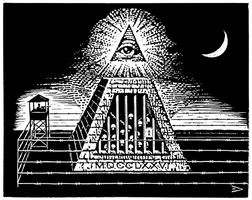"The prison-industrial complex is not only a set of interest groups and institutions. It is also a state of mind. The lure of big money is corrupting the nation's criminal-justice system, replacing notions of safety and public service with a drive for higher profits. The eagerness of elected officials to pass tough-on-crime legislation — combined with their unwillingness to disclose the external and social costs of these laws — has encouraged all sorts of financial improprieties."Ultimately, the incarceration industry helped keep much of American society, especially young black men, in a cycle of despair. For example, my home state of New York operated under the Rockefeller Drug laws for over thirty plus years and incarcerated non-violent offenders of drug possession for ridiculously long sentences. Meanwhile, more violent criminals were paroled and their recidivism rates were high. Sadly, in New York the issue remained largely un-addressed as Governor Mario Cuomo fed the correctional facilities construction beast with more money and contracts. His successor, George Pataki promised to repeal the Rockefeller laws when he took office in 1994 but he didn’t deliver until 2004. The issue seemed to peak politically during the last years of the Clinton Administration as Schlosser’s article helped garner coverage for public figures who spoke about it such as the Reverend Jesse Jackson. Since then some organized opposition emerged. A political interest group called Critical Resistance formed to raise public awareness about moral failures in the corrections industry and, “build an international movement to end the Prison Industrial Complex by challenging the belief that caging and controlling people makes us safe. We believe that basic necessities such as food, shelter, and freedom are what really make our communities secure.”Two states worth watching are California and New York. On February 19th, Neal Peirce of the Hampshire Gazette profiled both states in his article, “Growth of the US Prison Industry.” His article was posted in the The Real Cost of Prisons Weblog. Peirce reports that Governor Eliot Spitzer wants a commission to consider the merits of closing some of New York State’s dozens of prisons. This was also covered on February 5th in the New York Times (subscription required). New York's prison population peaked at 71,000 inmates in 1999 but has dropped by 8,000 the past eight years. Crime reduction in New York City is the major cause as well as reform efforts to find treatment for non-violent offenders. No doubt the corrections industry will lobby Albany hard to maintain the status quo but Spitzer has demonstrated his fondness for picking fights. Meanwhile, Governor Arnold Schwarzenegger is pressing for $11 billion in bonds to add 78,000 beds to California's expanding prison population. Currently, California has 173,000 inmates costing the Sunshine state $8 billion. Peirce quotes a California senior prison official warning that overcrowding and threats of riots are, "an imminent and substantial threat to the public.''Peirce also notes that, “Thirty years ago California's prison system was hailed as America's best, providing education and psychotherapy for offenders.”Critical Resistance posted the following about California on their website in January: ”Dear Friends,New York of course endured the shameful Attica prison riot of 1971 that resulted in the aforementioned Rockefeller drug laws. The legacy of those laws, widely replicated in other states, were expanding prison populations for possessing or selling even small amounts of narcotics. Thankfully, Governor Spitzer appears determined to aggressively reform New York’s correction system. However, many communities have an economic interest in preserving the status quo. As State Sen. Elizabeth Little, whose Adirondacks district includes 12 prisons told the New York Times, "There are over 5,000 corrections officers living in my district. In most of these communities, the prisons are the biggest employer.''Left unsaid by too many legislators such as State Senator Little and other politicians, is that white constituents are benefiting from union jobs while minorities are incarcerated with punishments not appropriate to the crimes or offenses committed. This is not justice and reflects badly on our national character. One governor, even in a state as large as New York isn't enough. This issue merits activism among civil libertarians across the political spectrum. Does anybody care? |
Monday, March 5, 2007
Does Anyone Care About America's Prison Industrial Complex?
Posted by
Robert Ellman
at
5:37 PM
![]()
Labels: Arnold Schwarzenegger, Eliot Spitzer, Elizabeth Little, Eric Shlosser, George Pataki, Mario Cuomo, Neal Peirce, prison industrial complex, Rockefeller Drug Laws, The Atlantic Monthly
Subscribe to:
Post Comments (Atom)









0 comments:
Post a Comment